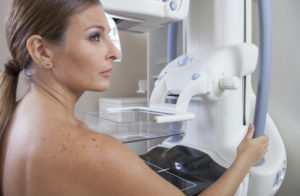Breast Density Part 1: More Tissue…
While the word spreads rapidly – and not nearly rapidly enough – about the importance of getting screening mammograms on a regular basis, there are still a lot of questions. Breast density on mammography has been in the news lately, but what exactly does breast density mean for you?
What is breast density?
Breasts are composed of varying amounts of fat, glandular tissue (including milk ducts), supporting structures and blood vessels. The more glandular tissue in your breast, the denser or whiter the mammogram. The official report on your mammogram should include a statement about your breast density. The report may classify the density of the breasts as:
-
Fatty or mostly fatty
-
Scattered fibroglandular tissue
-
Heterogeneously dense (“heterogeneously” means unevenly, in this case referring to unevenly mixed glandular and fatty tissue)
-
Dense or mostly dense
Putting your breast tissue in one of these categories is subjective. What one doctor calls dense may not be what another doctor says of the same breasts. Studies are underway to try to use computers to classify breast density for more consistency. If your mammogram places your tissue in one of the last 2 categories (heterogeneously dense or dense), you are considered to have dense breasts.
What does having dense breasts mean?
Dense breasts can be problematic in two ways: first, they make a mammogram harder to read or interpret. On a mammogram image, various shades of grey and white help to discern what types of tissue are being looked at, and what types of tissue are out of place. Unfortunately, dense breast tissue and some breast cancers will look similar, showing as white areas on a mammogram. Cancers may be harder to pick out of a background of dense tissue.
The second issue with dense breasts is several studies have shown a slight increase in the risk of having breast cancer, just from having dense tissue. That risk is only slight.
Now you know about dense breasts. What’s important is to find out if you have them and what that means you should do…
Originally posted 4/11/13 on mammographykc.com.





